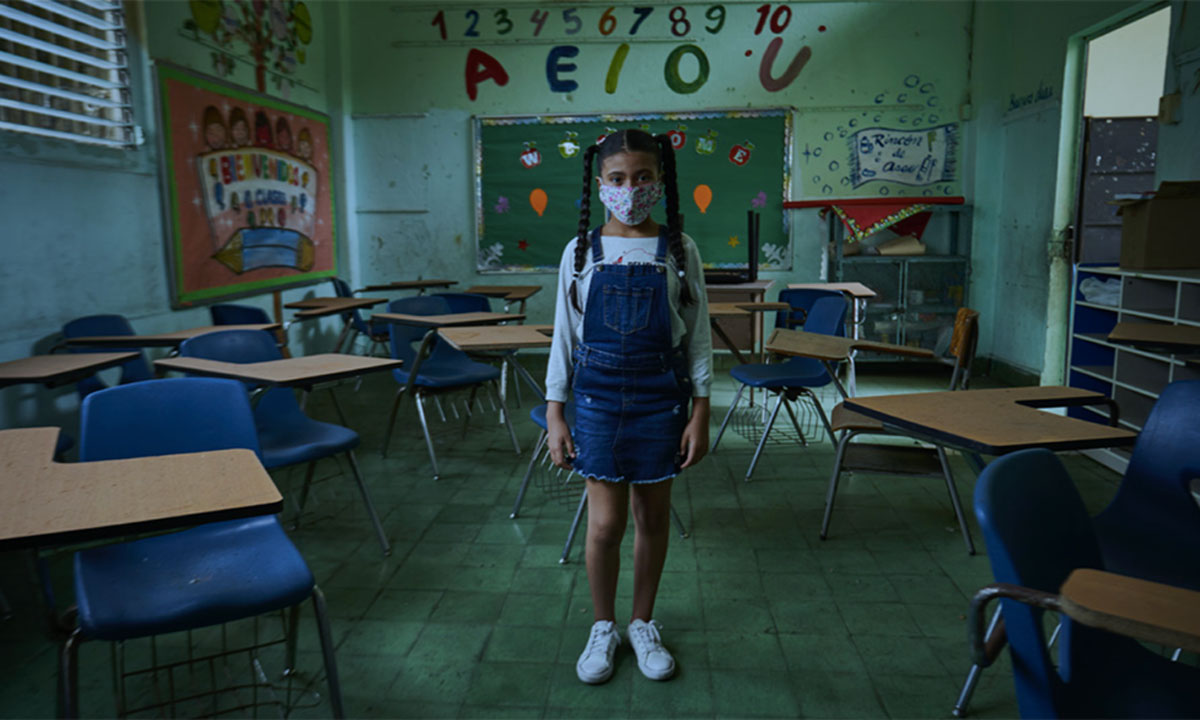Americans Have Yet to Accept COVID’s Tragedy — And Are Taking It Out On Schools
Williams: Four punishing years later, we should give ourselves and our schools some measure of grace.

Get stories like these delivered straight to your inbox. Sign up for The 74 Newsletter
In my District of Columbia neighborhood, everything pretty much ground to a halt on Friday, March 13, 2020. My kid won the school’s bilingual spelling bee in a crowded auditorium buzzing with speculation that the school probably wasn’t reopening next week. Hours later, an announcement from administrators confirmed it: our pandemic had begun.
By March 20, I’d realized that this was one of Those Moments, a historical signpost when your choices and behavior will echo back at you later, whenever someone asks, “Where were you when?” By the middle of that summer, though, as my social world filled with people shocked that their vacations and family reunions had become superspreader events, I’d also realized that we were collectively going to spend most of this catastrophe wishcasting it away.
The rest, as they sort of say, became history. The pandemic’s consequences were — are — too dire to ignore, but also too inconvenient to fully acknowledge. Four years later, we’re also at an awkward remove from its most dramatic moments: The pandemic is largely concluded as an historical event, yet we’re not yet far enough out to have anything like a clear view of what’s happened. Most of us are still too battered from the burdens we carried to pause and genuinely reflect. We’ve all spent so many hours of the past four years jabbering into webcams at screenfuls of tiled faces. March 2020 was so many pixels ago.
That’s why this anniversary should also be an invitation to extend a modicum of grace to ourselves, our peers and our schools. These were four punishing years. Pretending they can be quickly shaken off is yet another effort to shuffle the pandemic away without really grappling with it. Both individually and collectively, Americans have not yet accepted the scope of the tragedy and we’re taking it out on our schools.
This odd unwillingness to recognize the pandemic as an unavoidable calamity is part of why we’re still endlessly relitigating pandemic mitigation measures in schools — closures, masks, quarantine policies, and the like. If, in 2019, we’d conducted a thought experiment, asking folks to predict the educational impact of a then-hypothetical viral pandemic that would be transmitted via breathing and would kill nearly 1.2 million Americans, most of us would agree that kids wouldn’t steam forth making the usual academic progress.
And indeed, the real pandemic unquestionably harmed U.S. students’ academic trajectories, even if they appear to have weathered it better than their peers in most other countries. Yet here on the other side of that disaster, we’re determined to assign blame for dips in U.S. students’ academic achievement, as if learning loss could have — should have — been avoided in a moment of widespread viral transmission and mass death. Say it plain: There was no educational and public health playbook that could have wholly averted the pandemic’s impacts on kids. As The New York Times’s David Wallace Wells put it in 2022, “[T]he declines, all told, strike me as relatively small, given the context: a brutal pandemic that terrified the country and killed more than a million of its citizens, upending nearly every aspect of our lives along the way.”
But because we can’t face that, we’re now in an educational “One Weird Trick” era, as the field floods with quick-fix solutions to reversing the pandemic’s impacts (particularly with federal pandemic recovery ESSER funds sunsetting). While it’s always appropriate to prioritize high-quality learning opportunities for children, it’s a short step from “let’s help kids accelerate their learning” to “if we do enough now, we can — yet again — banish the pandemic’s impacts from kids’ lives” (particularly if we just buy the right new ed tech product).
The reality is much harsher. Researchers have known for years that it’s much tougher to shift students’ academic trajectories later in their careers. That’s why children who miss early literacy benchmarks so rarely catch up in later grades. It’s also why investments in high-quality early learning — like universal pre-K programs — are such a good policy idea. Now, we have a country of children who, again, inevitably, faced years of disrupted learning. Evidence suggests that closures contributed to lost learning, but only as one of many, interrelated variables, and — as noted above — students’ academic achievement in the U.S. appears to have suffered less than it did for students in peer countries that reopened on different timelines and with different COVID mitigation strategies.
Furthermore, the educational story of the past few years is far more complicated and painful than we’d like to admit and its aftereffects won’t vanish because we invest in some limited tutoring programs. Nor could they have been averted if only schools had found some magic mitigations formula to maintain normalcy for kids even as a whole lot of us repeatedly exempted ourselves from responsibility for flattening the curve.
Why are we so resistant to facing this fact of the pandemic, even now that it’s mostly receded from daily life? It’s flatly impossible to look back at these four years without seeing how national leaders’ rhetoric drove this attitude: real and massive suffering coupled with willful self-deception and disinformation. The Trump administration flailed through COVID’s early stages, insisting it would be over in a few days or weeks, then dabbling in pseudoscience — remember hydroxychloroquine, ivermectin, and light and/or disinfectant “injected” into people’s lungs?
That deadly unseriousness was contagious and collectively punishing. We’ll never know how the country would have behaved under less erratic leadership, but this band of feckless incompetents convinced masses of Americans that the pandemic could be largely ignored if we just wanted it badly enough. Their glib irresponsibility built the narrative that still plagues U.S. public education today — this notion that schools could somehow persist as normal when absolutely nothing around them was. It seems obvious that the ungainly federal response damaged Americans’ trust in public institutions and the social strains it caused ripped deeper holes in our shared social fabric.
American pandemic flounderings were also personally crushing for many of us. Looking back, I feel a flat, dull, full-body weight settle back into my spine, that familiar 2020-vintage exhaustion. And that’s why, I know this for certain: whatever we all think now about the precise sequence of school closures, reopenings, mitigations, learning loss, and so forth, the past four years ripped a chunk out of the well-being of U.S. parents, caregivers, and teachers.
That’s probably the clearest reason that the country’s still so determined to shift the pandemic out of mind and/or erase its impacts. No one wants to accept how far it knocked us — and our children — off the trajectories we hoped we were following. I remember reaching a point in the endless work-life-kids-panic pandemic juggle where I developed this yearning to just sit quietly on a rocky beach somewhere and watch the waves roll in. To just meditate and let my mind unspool from the tension of masks and ambulances.
I kept telling my wife, “I bet I could sit there and stare for days before my head finally got back to something like normal.”
Get stories like these delivered straight to your inbox. Sign up for The 74 Newsletter


